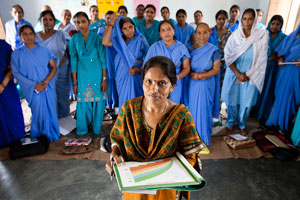Sources of funding
Alumni
 Schools in developed countries have a long history of maintaining a relationship with alumni. This relationship serves a number of purposes, including determining how well graduates have been prepared for the profession. However, perhaps the most important use of alumni has been for fundraising. In most countries, medical practitioners are in the upper quintile of wage earners (Freeman and Oostendorp 2000). Therefore they are in a better financial position to donate than most citizens. Given the large numbers of alumni that most schools have, even small donations can make a significant difference to a school’s funding. Alumni are also an important source of large donations, such as those for named buildings or endowed chairs. The alumni association of the King Edward VII College of Medicine and Faculties of Medicine of the Universities of Malaya and Singapore has contributed extensively to the development of the alma mater in the form of endowed chairs and fellowship funds (Lim 2005). Tapping into alumni as a source of funding requires relatively small investments in alumni affairs programs to track alumni and offer programs to engage them in the ongoing life of the school.
Schools in developed countries have a long history of maintaining a relationship with alumni. This relationship serves a number of purposes, including determining how well graduates have been prepared for the profession. However, perhaps the most important use of alumni has been for fundraising. In most countries, medical practitioners are in the upper quintile of wage earners (Freeman and Oostendorp 2000). Therefore they are in a better financial position to donate than most citizens. Given the large numbers of alumni that most schools have, even small donations can make a significant difference to a school’s funding. Alumni are also an important source of large donations, such as those for named buildings or endowed chairs. The alumni association of the King Edward VII College of Medicine and Faculties of Medicine of the Universities of Malaya and Singapore has contributed extensively to the development of the alma mater in the form of endowed chairs and fellowship funds (Lim 2005). Tapping into alumni as a source of funding requires relatively small investments in alumni affairs programs to track alumni and offer programs to engage them in the ongoing life of the school.
Clinical care
Clinical care can help fund education by subsidizing faculty salaries, purchasing equipment used in clinical teaching, or generating profits that are directly invested in education (Watson 2003). In the US, for example, 87% of graduate medical education is funded directly or indirectly by patient revenues (Braddom 1997). Even in countries where basic care is free, private “concierge care” or medical tourism can generate funds that subsidize health worker education.
Concessionary lending
Donors can set up subsidized loan programs to help establish or expand health professional schools. For example, through its Health in Africa program, the IFC offers concessionary loans to schools (IFC 2010).
Diaspora
The global Diaspora, especially the health Diaspora, is a rich source of potential investment in health schools. Either large donations from individuals or collected donations from Diaspora organizations such as the Association of Nigerian Physicians in the Americas can be sought. For example, the Garden City Nursing School in rural Ghana was founded completely with the donations of a single Ghanaian physician from that region. The West African College of Surgeons is another institution that has provided the Diaspora a vehicle through which they can give back to their societies (Bode, Nwawolo, and Giwa-Osagie 2008).
Diverting existing financial streams
Currently many countries spend large sums of money in training health workers overseas. If this money were instead invested in founding health professional schools in-country, the same number of health workers could be trained more efficiently. For example, Ghana was spending $500,000 per year to train dentists in the UK, of which only 10% returned. The government decided to divert this scholarship funding stream into founding the first dental school in Ghana. The school was started with a total investment cost of $750,000 and has now trained 200 dentists, the majority of whom are still practicing in-country1. This plan reaped triple benefits: not only was Ghana able to train more dentists more cost-effectively, but these dentists are more familiar with the pathology and resources found in Ghana, and more of them are actually practicing in Ghana and contributing to the health of communities. In another example, the government of Botswana spends $2 million a year sending patients to other countries for medical care that could not be received in-country. Now that the government is in the process of founding a medical school, this care can be provided more cost effectively in-country.
Donations and endowments
Donations and endowments are large financing contributions to a school. The entire medical school at the University of Chicago was established by way of a collection of endowments by a number of donors (Anonymous 1916). Donations tend to be spent immediately whereas endowments are invested to provide permanent income streams to the school. Even in countries with relatively low GDPs, there are wealthy people in-country or in the Diaspora who are interested in making a permanent and visible contribution to their country. Smaller donors can also be sought via fundraising campaigns. Tapping into the potential of donations and endowments requires having a donor development office. In addition, school board members are often required to make personal donations as well as to engage potential large donors.
1 Presented at IFC seminar on innovative financing for preservice education, March 31, 2010.

